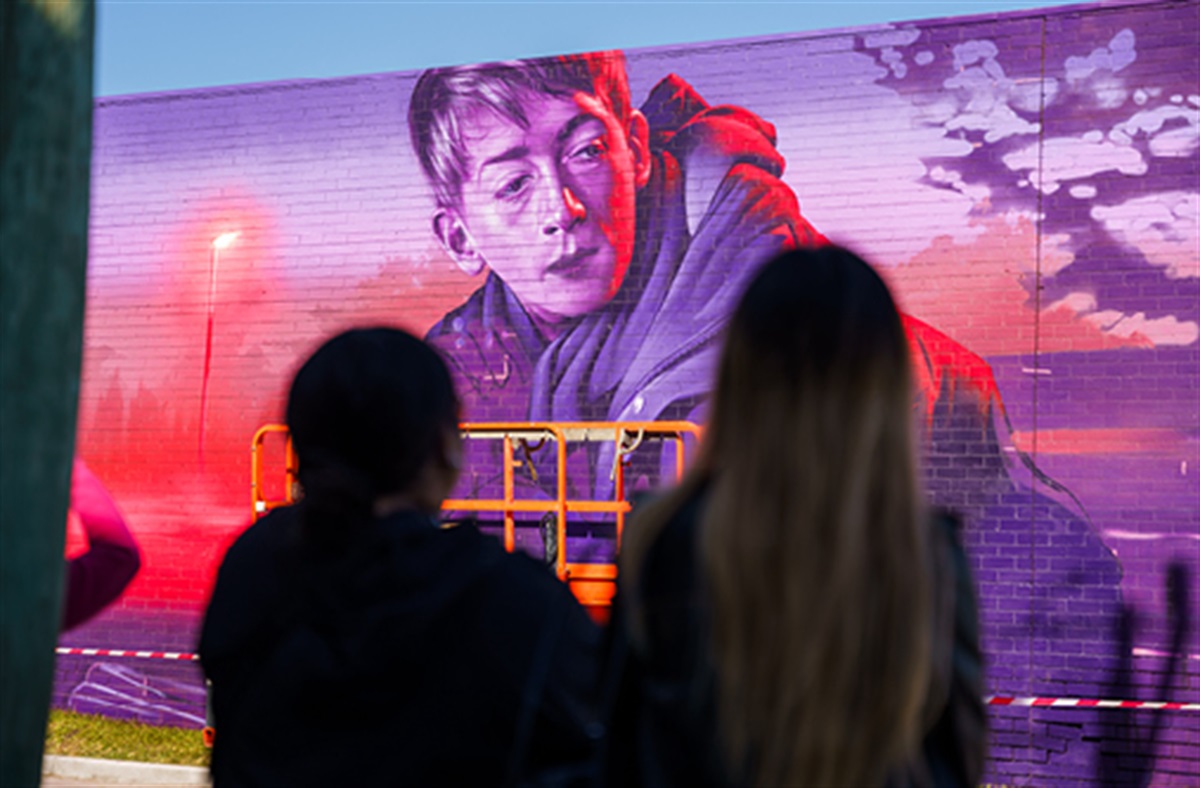Assistant Minister to the Prime Minister
PAUL MURRAY, HOST: I also want to talk about what is happening at home right now. And Patrick Gorman is the new Assistant Minister to the Prime Minister, and he joins us now. Assistant Minister, nice to talk to you. Now, the decision for Australia to have its public holiday, not in line with the funeral, but of course, on the 22nd of September, let’s just deal with the formalities of why that date has been chosen.
PATRICK GORMAN, ASSISTANT MINISTER TO THE PRIME MINISTER: That date, the 22nd of September, is the date that we will have the National Memorial Service held here in Canberra at Parliament House. Now, where I’m coming to you from here at Parliament House right now, the building is currently lit up with photos of significant moments in Queen Elizabeth II’s visits to Australia. So we’re already starting a range of those moments where we recognise the outstanding contribution to this country as part of the Commonwealth. The conversations the Prime Minister had and reflected with the Chief Ministers, the Premiers, was that this was as much notice as was possible to give to businesses, to give to the many organisations, and indeed to make sure that the Prime Minister and the Governor General can return to Australia after attending the service in London so that they can be here. And of course, we can have that appropriate national memorial for an extraordinary life of service.
MURRAY: Yeah, I think that’s completely reasonable. Exactly the right decision, frankly. And also I want to commend the Prime Minister on the way that he has handled himself over the past few days, particularly putting aside contentious questions about our future. And yes, there’s a Minister for the Republic inside his administration now, but saying that that’s not about this term, but about next term, I think that’s been reassuring to a lot of people to hear that there’s not going to be any change to the timeline based off the events of this particular week. It’s really important, of course, that Australia has the opportunity to have its own day and its own ability to have its own national mourning for Her Majesty, because, look, I get it, a lot of people who live in the television or internet age, they are used to the sort of the instantaneous way that things happen. But the reality is that it doesn’t take two minutes to get here, it doesn’t take two minutes to get here, it doesn’t take two minutes to get back. So therefore, you need to have our Prime Minister and our Governor General echoing what’s happened here. Again, the logistics make perfect sense to me as we wait for the King to depart his plane.
GORMAN: That’s exactly right. And one of the things I think is extraordinary is that in 1952, when the Queen took on that position, we couldn’t do what we’re doing today. We didn’t have satellite television – that didn’t come along until 1962. So the fact that you are there out the front of Buckingham Palace talking to people who have met the Queen, met the new King, have those amazing insights, and that you’re able to broadcast that back to Australia means that people can engage in this reflection on an incredibly significant lifetime of service in so many different ways. Some of the ways that we’ve already seen Australians do that is through signing condolence books at Government House in their respective state or territory. One of the things we’ve done today is to make sure that every member and senator has access to a condolence book in their electorate office. So even if you’re in regional Australia, you can travel to your local member’s office to leave your message, then be passed on to Buckingham Palace. So there are a range of things, as we continue day on day, to make sure that Australians, wherever they live and however they want to recognise this life of service, indeed recognise the role of the new king, King Charles III. Those opportunities are made available to them. That’s really important too.
MURRAY: Again, Patrick, and one of the joys of talking to Australians, we can call each other by first name, regardless of title, and I appreciate it.
GORMAN: That’s right Paul.
MURRAY: There’s a lot of things that change. Correct. And I know that we know that things like our money is going to change. Interesting little traditions, that whatever direction the current king or Queen is facing on our coins or notes, they have to look the new king or queen. In this case, the King ends up facing the other way. So right to left or left to right. Also, the sovereign generally has been represented on the lowest denomination of our notes. So the old $1 note is where the Queen was that then moved to the $5 note. Is there going to be a national conversation about the five dollar note or the assumption is that where the Queen is now, Charles is into the future?
GORMAN: I think that would be a matter for the bankers to resolve through the Reserve Bank and the Australian Mint and everything else over the next year or so. We don’t rush these things and I think that’s important too, is up to that. Of course, we can’t reproduce the King’s image without his consent, so, appropriately, these things will take a bit of time. I know there have been many people who’ve been reaching out for portraits of the new King to their members of Parliament. Those things will come in time too. Right now, the primary focus is on making sure that we get that national event for Thursday, the 22 September. Make sure that that isn’t just something that those of us who are fortunate enough to be able to attend in person here in Parliament House can participate in. But make sure that we get it right so that you can broadcast it to your viewers wherever they live in Australia or indeed they’re watching online. And make sure that where people may choose to hold and host screenings of that service, or indeed people who choose to travel to Canberra to watch it outside the Parliament House to make sure that all of that is in place so that Australians, again, wherever they live and however they choose to interact, can recognise that incredible life of service.
MURRAY: And just finally, for that day being Thursday the 22nd, what are we going to see in terms of I mean, obviously the program is still being put together, many speeches, no doubt an Indigenous tone that will run through things as well is the expectation that it is a multiple hour service and ceremony. Is it something that looks a little more like a swearing in of Parliament or it feels a little more like a church service outside? Give me an idea about what our expectations of this thing should be.
GORMAN: Well, we’ve taken advice from the Palace that they want to see an Australian way of commemorating this life, so it will be a uniquely Australian service. You’ll see a very heavy focus on the special relationship that the Queen had with Australians and indeed on those 16 visits that she made to Australia, interacting with tens of thousands of Australians over seven decades. So that will feature very heavily. The finer details are still being resolved. I don’t think we’ll have those for you for another few days. It will start at 11:00 a.m.. It will be hosted in the Great Hall here at Parliament House. It will commence with a 1-minute silence and I imagine for a life of 70 years of service, I think it will go for an appropriate amount of time to make sure that we capture as much as possible of the great admiration that Australians had for Queen Elizabeth II.
MURRAY: Appreciate it. Thank you very much. Thank you very much. Patrick Gorman, Assistant Minister to the Prime Minister in Canberra. All the best to you and everyone handling things from the Australian end.








